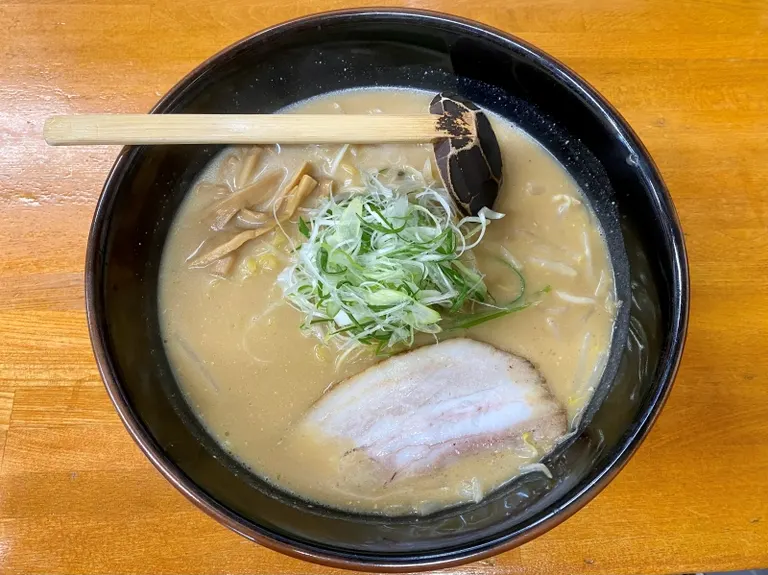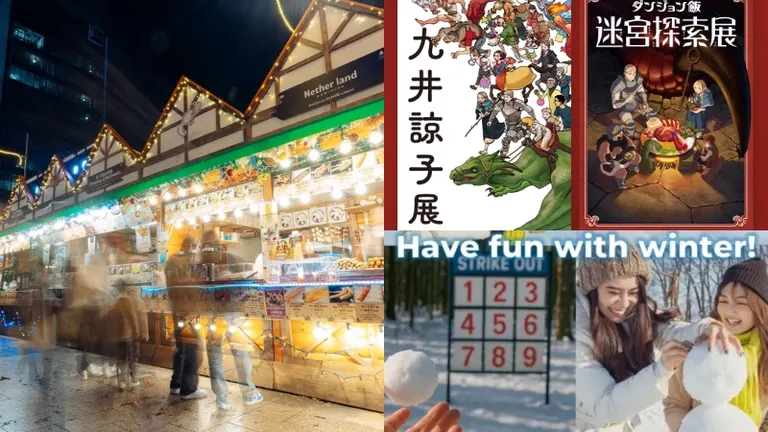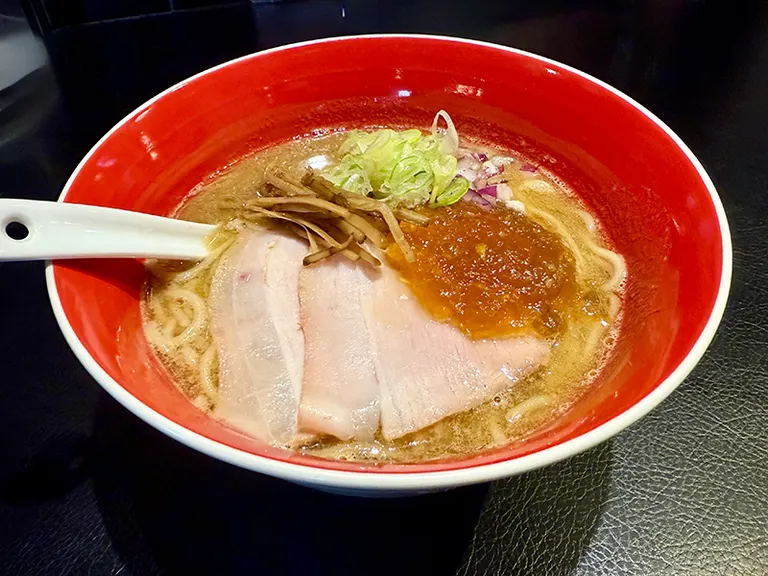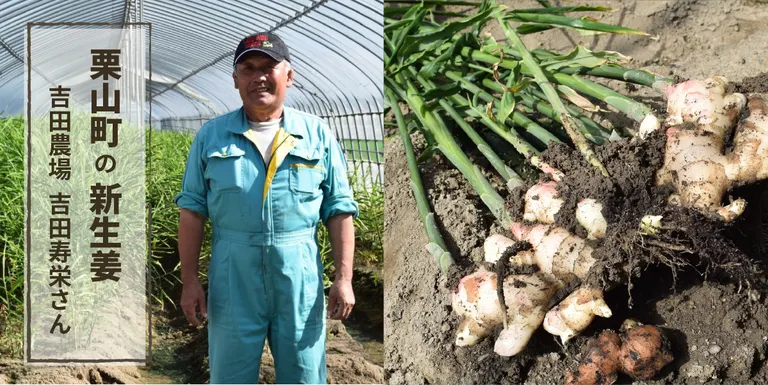
ARTICLES
Hokkaido's fresh ginger is in season! Yoshida Farms taking on the challenge of growing ginger in Kuriyama Town.
The Domingo editorial staff has started a series of articles that travel around the rich "food" and "people" of Hokkaido and tell their stories!
We will be guided on a food-related journey by chef Mae Matsuda, who is particular about Hokkaido's ingredients and has many connections with producers.
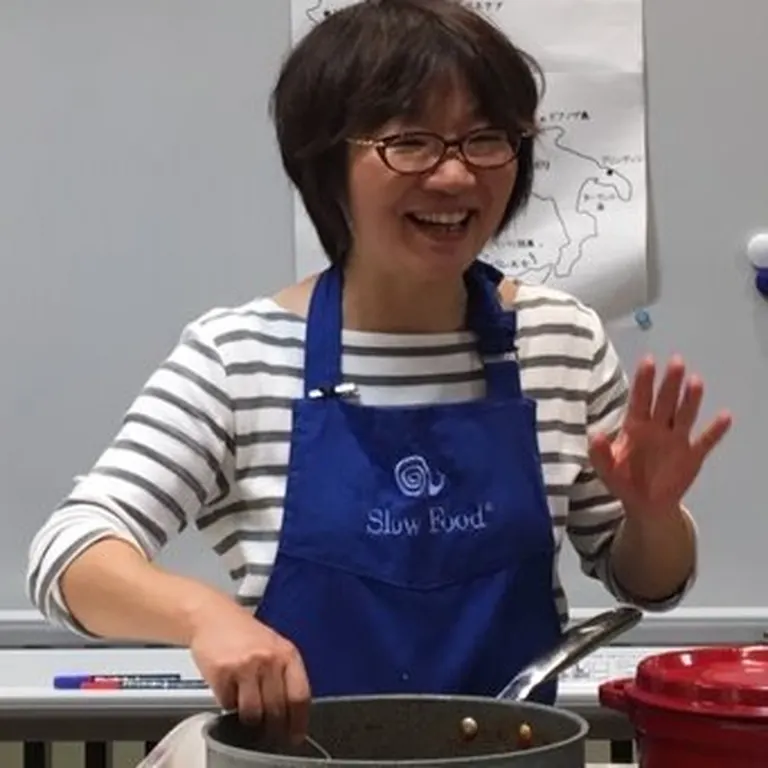 Chef Mae Matsuda
Chef Mae Matsuda
Resident of Hokkaido. She is an Italian chef who loves kelp. She is the author of the dancyu series "Where Does the Kelp Go? Ethical is delicious! Magazine, TV, newspaper, and recipes to support municipalities. Recipes from the chef in "The Blessings of the Sea: The Power of Food JAPAN".
This time, Mr. Matsuda introduced us to Mr. Hisae Yoshida of Yoshida Farm, a fresh ginger grower in Kuriyama Town.
He asked me, "Is fresh ginger something that can be grown in Hokkaido? What does fresh ginger look like in the field? He told us many things we were curious about!
Now is the season! Why don't you learn more about Hokkaido's fresh ginger?
Table of Contents
1. fresh ginger in season in Hokkaido
2. "Growing fresh ginger" in Hokkaido
3. what ? What does it look like? What fresh ginger looks like
4 . where can I get this fresh ginger?
5. the future of fresh ginger that Mr. Yoshida envisions
New ginger in season in Hokkaido
The harvest of fresh ginger in Hokkaido is in its peak season.
Several towns in Hokkaido are now cultivating fresh ginger.
This is the third year that Kuriyama Town, one of these towns, has been cultivating fresh ginger, and six farmers in the town are growing fresh ginger.
We interviewed Mr. Hisae Yoshida of Yoshida Farms.
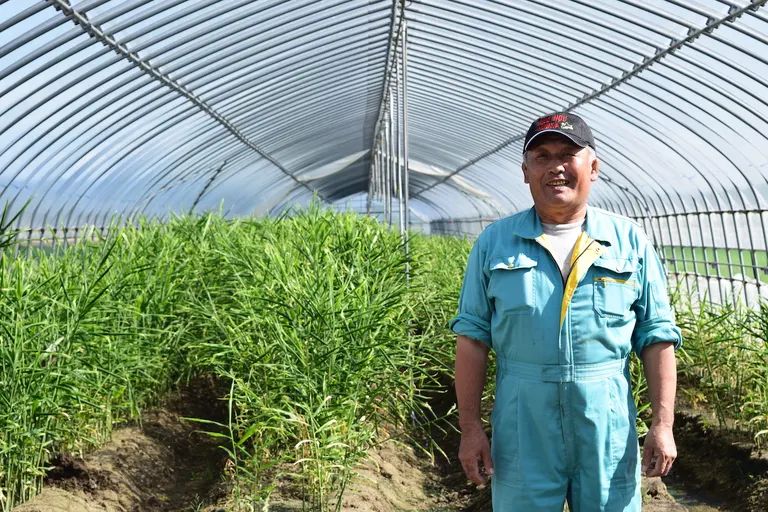
The farmer has fields not only in Kuriyama but also in Iwamizawa City, and his main crop is onions, but two years ago he started growing fresh ginger together with JA.
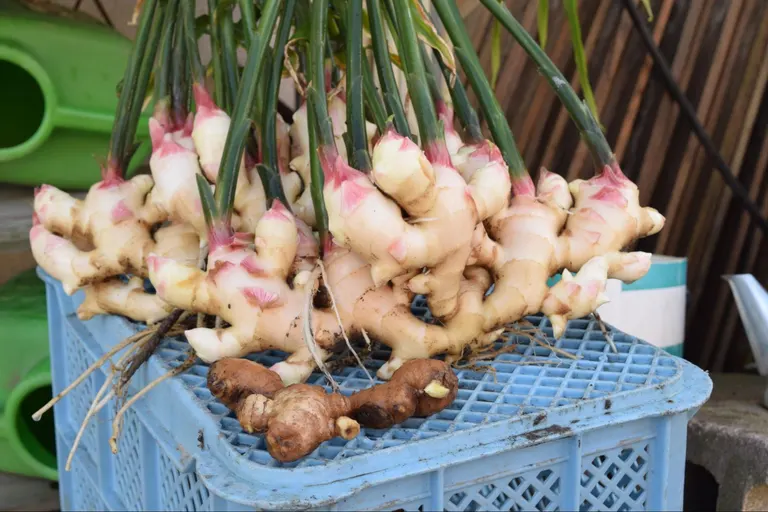
Growing fresh ginger in Hokkaido
Many people may not have a clear idea of what it means when they hear that "fresh ginger is grown in Hokkaido.
Kochi Prefecture is the most famous ginger-growing region in Japan. Many of the ginger sold in supermarkets is probably also produced in Kochi Prefecture.
The world's major production areas of ginger are warm countries such as India and Nigeria, right?
Yes, warm regions are suitable for growing ginger, and it is a crop that does not like the cold.
Why was it possible to grow ginger in Hokkaido, where the mornings and evenings are relatively cool even in summer, and where ginger prefers a warmer climate?
Mr. Yoshida explains, "It is a matter of thoroughly controlling the temperature until the seed ginger (old root ginger) sprouts, and then growing it in a warm greenhouse."
Mr. Yoshida has finished growing onion seedlings, which are his main crop, and uses the empty greenhouses for ginger cultivation. Other farmers are growing ginger in greenhouses where they have finished growing rice seedlings.
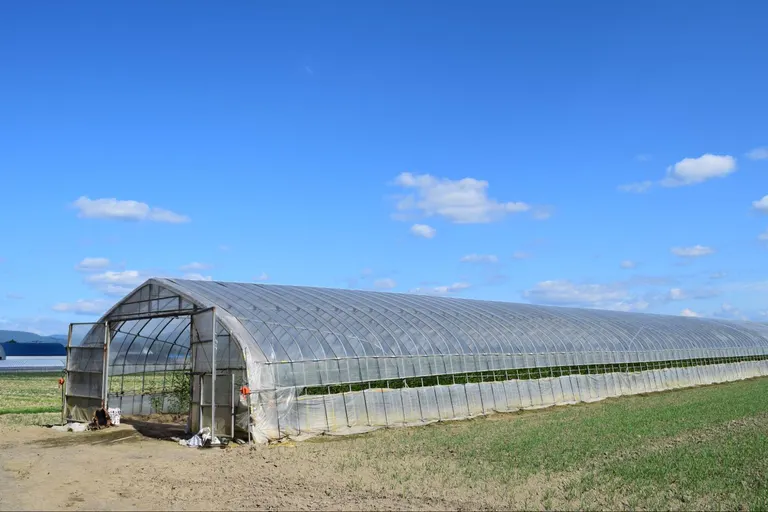
The cultivation schedule for new ginger roughly looks like this.

First, seed ginger (old root ginger) is planted and sprouted in early April. Ginger is a cold-sensitive plant that rots when the temperature falls below 14℃. Therefore, they use electric heating wires that can maintain a constant temperature to grow ginger for 35 days at 20 degrees Celsius until the total temperature (*) reaches 700 degrees Celsius and sprouts.
Total temperature: A measure of the amount of heat required for the growth of plants, especially crops. It is expressed as the total value of the average temperature of each day of growth. (From the Nippon Encyclopedia (Nipponica), Shogakukan)
In mid-May, when the onion seedlings have finished growing and the greenhouses are empty, the seed ginger is replanted in the greenhouses after the sprouts emerge from the seed ginger. Although the timing is a little different, ginger is planted in the same way in the greenhouses where rice seedlings have been grown.
From then on, he says, they keep the greenhouses watered and let the ginger grow in full sunlight.
He says, "We just have to keep the water running. Ginger is resistant to disease, and they don't use any pesticides. So the leaves and the ginger are safe and secure."
The greenish soil in the field is moss, he says. It is a proof of cultivation so that there is no constant water. Yoshida Farm's soil is clayey, and its ability to retain water makes it suitable for ginger cultivation.
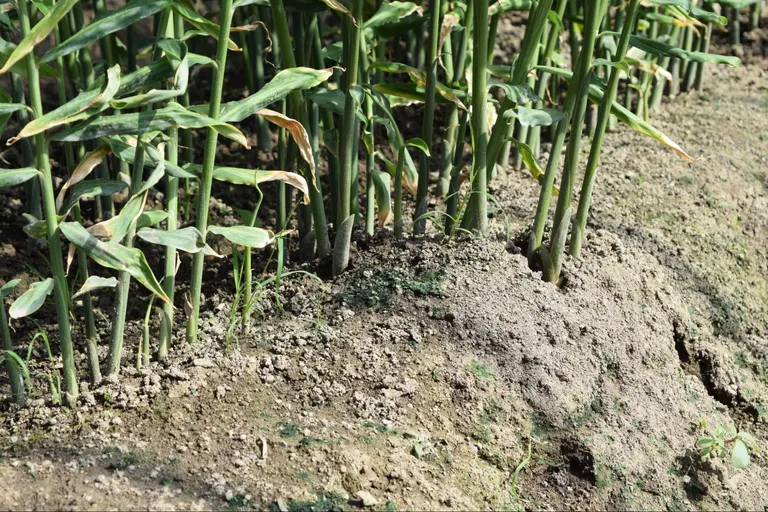
Around the end of September to mid-October, when the new ginger has grown to the point where it can be harvested, it is dug up.
This is the second year for fresh ginger cultivation at Yoshida Farm, and the farmers are working together with the staff of the agricultural cooperative to cultivate fresh ginger through a trial-and-error process, including starting this year to grow seedlings in pots, which is done in April.

What? It looks like this? The shape of new ginger
The time was mid-September, when we visited them and they dug up some fresh ginger.
The leaf is this. They are similar in appearance to bamboo grass leaves.
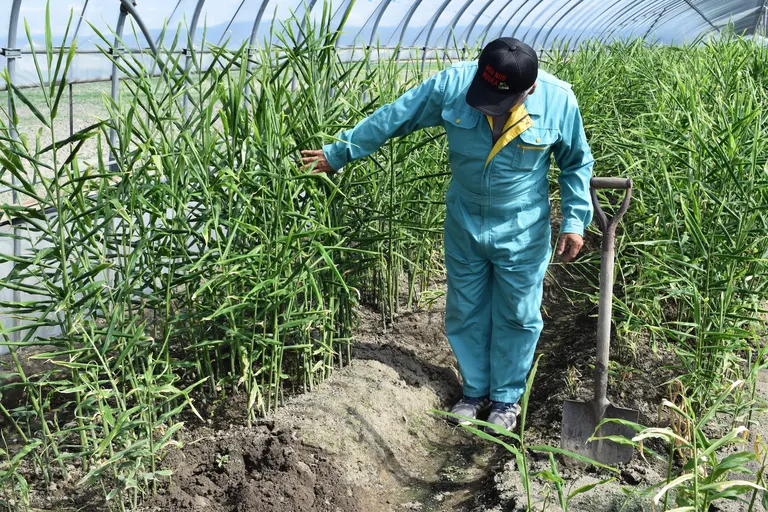
I dug them out by inserting a shovel firmly so as not to damage the ginger.
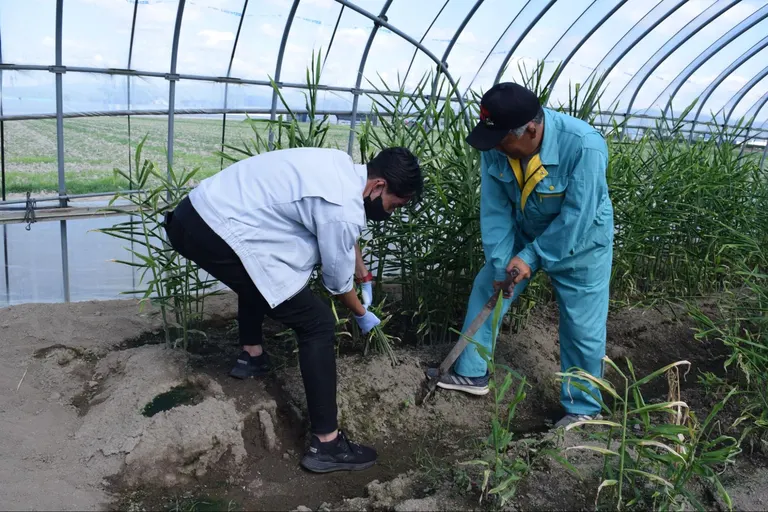

I found such a big chunk of fresh ginger at ......!
I was shocked to find fresh ginger buried in the earth like this and that it was originally so large.
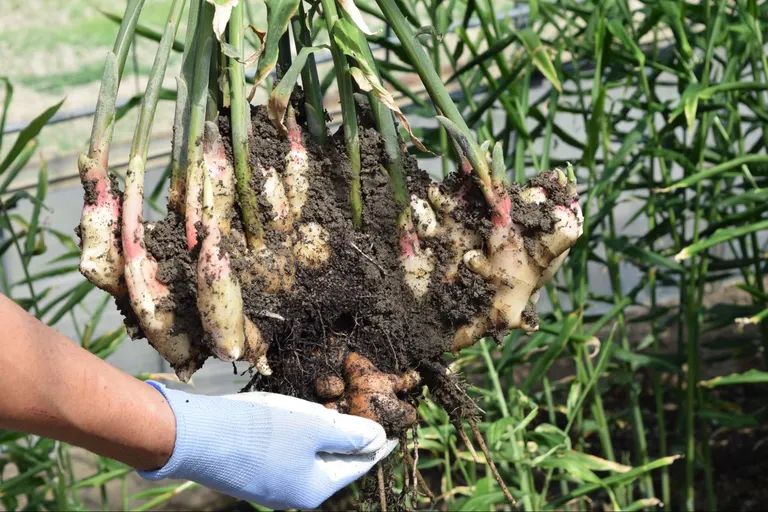
The whitish part on top is new ginger, and the little bit on the bottom is seed ginger (old root ginger) that was used to sprout.
I was amazed at the life force of ginger, thinking that from a tiny seed ginger, such a big new ginger could grow and such leaves could grow.
The fresh ginger that is dug up is washed clean and the leaves are cut for shipping.
They are so fresh and the color is so beautiful.
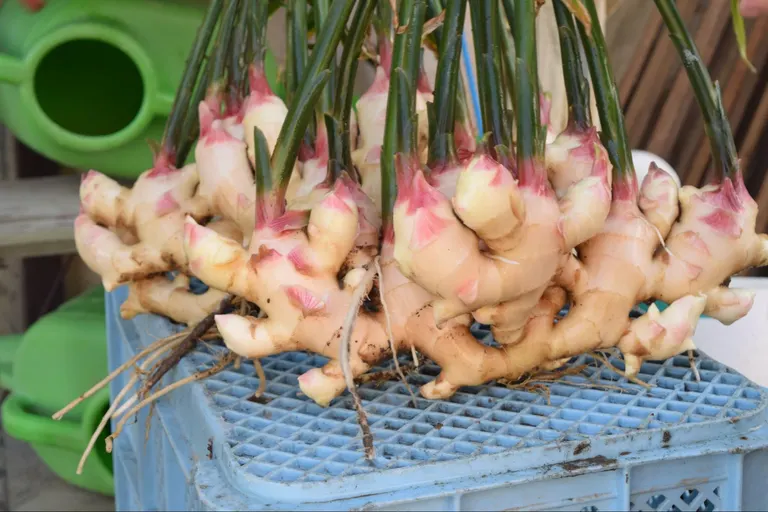
Mr. Yoshida's favorite way to eat them is pickled in sweet vinegar or in tsukudani (food boiled in soy sauce)!
Chef Matsuda-san used the ginger at this time to make a new ginger recipe to go with Hokuto Zuisho and Maruda, Japanese sake from the Kobayashi Sake Brewery, also located in Kuriyama Town!
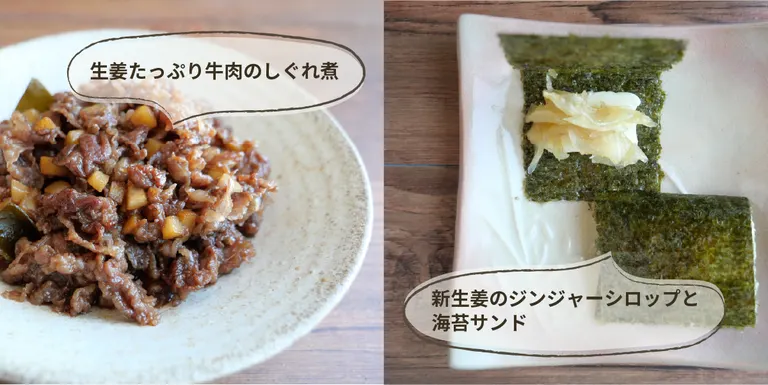
Left: Ginger-filled beef shigureni (shigureni stew) Right: New ginger nori sandwich
Check out this article for the recipes of "Shigureni with ginger-filled beef" and "Nori Sandwich with fresh ginger in ginger syrup"!Now in season! Recipes for snacks using fresh ginger from Kuriyama-cho, Hokkaido
Please refer to these recipes and try plenty of fresh ginger in season!
Where can I get this new ginger?
Yoshida Farms' fresh ginger is shipped to Hokuren.
It can be purchased at Hokuren and A-Coop in Hokkaido, and some is also shipped to Tokyo.
If you are in the area, please check when you shop.
Mr. Yoshida's vision for the future of fresh ginger
I would be happy if people in Hokkaido eat fresh ginger grown in Kuriyama and become fans. I want to make the culture of eating fresh ginger more rooted in Hokkaido and produce more fresh ginger as a farmer.
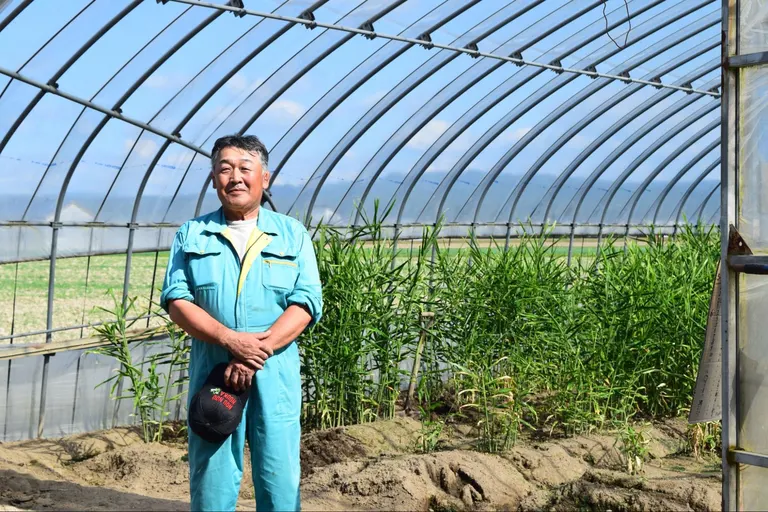
This year marks the third year of fresh ginger cultivation in Kuriyama. Currently, they are in the process of cultivating ginger through a trial-and-error process in the form of a "research group.
They have been seeking a better cultivation method by exchanging opinions with farmers and agricultural cooperatives in Bibai City, who were the first in Hokkaido to engage in fresh ginger cultivation.
The current problem is that there are not enough customers to ship to. Now that stable cultivation has become possible, he hopes that Hokkaido residents will learn that fresh ginger is grown locally and that a culture will take root in which fresh ginger can be enjoyed more easily.
If you find fresh ginger produced in Hokkaido at the supermarket, please pick it up and enjoy not only the sweet-and-sour pickled fresh ginger, but also chef Matsuda's recipes for shigureni-ni (stewed fresh ginger) and nori (seaweed sandwiches).
Coordinators and recipes provided by
 Chef Mae Matsuda
Chef Mae Matsuda
Lives and works in Hokkaido. She is an Italian chef who loves kelp. She is the author of the dancyu series "Where Does the Kelp Go? Ethical is delicious! Magazine, TV, newspaper, and recipes for supporting municipalities. Recipes from the chef in "The Blessings of the Sea: The Power of Food JAPAN".
Also read
Recommended for readers of this article
The Season is Now! Recipes for snacks using fresh ginger from Kuriyama Town, Hokkaido!
An Edible Brick "Nenka Mochi" Born in the City of Bricks! Five sweets with a nostalgic flavor
Topics near this article
Opening Sake Brewing to the Community. Kobayashi Sake Brewery Responds to the Changing Times: The Thoughts of the Fourth Generation Kobayashi Yonesaburo
A large collection of delicious vegetables from Kuriyama Town! Farmer-operated direct sales market "Value Market








